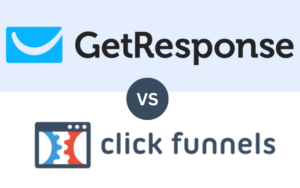Zoom vs WebEx: Overview
Zoom vs WebEx stand out as leaders in the video conferencing space, each offering a suite of features tailored to diverse user needs. Zoom has gained popularity for its user-friendly interface and extensive set of collaboration tools, while WebEx, with its robust security features, appeals to enterprises prioritizing data protection.
Overview of Video Conferencing Tools
In today’s digital landscape, video conferencing tools play a pivotal role in connecting individuals and businesses across the globe. Choosing the right platform becomes crucial as virtual communication becomes increasingly integral to our daily lives. In this guide, we’ll focus on two prominent contenders: Zoom and WebEx, providing you with insights to help you make an informed decision.

Why Video Conferencing Matters
Video conferencing tools serve as the virtual bridge that brings people together, enabling seamless communication, collaboration, and connectivity. Whether you’re hosting business meetings, educational sessions, or catching up with friends and family, these platforms facilitate face-to-face interactions, breaking down geographical barriers.
Importance of Choosing the Right Platform: “Zoom vs WebEx”
In the world of virtual communication, selecting the appropriate video conferencing platform is more than a choice; it’s a strategic decision that can significantly impact your online interactions. Let’s delve into the importance of choosing the right platform in the context of “Zoom vs WebEx.”
Efficiency and Productivity Boost
The right video conferencing tool can be a catalyst for efficiency and productivity. Zoom vs WebEx, as frontrunners in the industry, offer features designed to streamline communication. From crystal-clear video quality to seamless file sharing, these platforms are geared to enhance collaboration among team members, fostering a productive work environment.
Seamless User Experience
Imagine a video conferencing tool that is intuitive and easy to navigate. Both Zoom and WebEx prioritize user experience, ensuring that participants can focus on the meeting rather than grappling with complex interfaces. A well-designed platform can eliminate unnecessary technical hurdles, allowing for smoother and more enjoyable virtual interactions.
Flexibility for Diverse Needs
Every user has unique requirements, and the right platform should cater to diverse needs. Zoom and WebEx, with their array of features, accommodate various scenarios, whether it’s a small team meeting, a large-scale webinar, or an interactive training session. The flexibility these platforms offer ensures they can adapt to the specific demands of your virtual engagements.
Security Considerations
Security is a paramount concern in the digital age. The “Zoom vs WebEx” debate often hinges on the security features provided by each platform. WebEx, known for its robust security measures, may be preferred by businesses that prioritize data protection. Meanwhile, Zoom has implemented improvements to enhance its security posture, making it essential to weigh these factors based on your organization’s requirements.

Features: “Zoom vs WebEx”
The success of a video conferencing tool often hinges on its features – the arsenal that transforms virtual meetings into collaborative and engaging experiences. Let’s compare the key features of “Zoom vs WebEx” in terms of video and audio quality, screen sharing capabilities, breakout rooms, chat functionality, and integration with third-party apps.
Video and Audio Quality
Zoom and WebEx both prioritize high-quality video and audio, ensuring that virtual interactions feel as close to in-person meetings as possible. Zoom, renowned for its impressive video clarity, provides adaptive streaming to accommodate varying internet speeds. WebEx, on the other hand, delivers crisp audio and video, catering to the needs of businesses that require top-notch communication.
Screen Sharing Capabilities
Sharing screens is a fundamental aspect of virtual collaboration. In this aspect of “WebEx vs Zoom,” both platforms excel. Zoom’s screen sharing functionality is seamless, allowing participants to share their entire screen or specific applications effortlessly. WebEx offers similar capabilities, with the added advantage of annotation features during presentations, enhancing the collaborative experience.
Breakout Rooms
Breakout rooms are invaluable for dividing participants into smaller groups during larger meetings or conferences. Zoom introduces an intuitive and user-friendly breakout room feature, enabling seamless collaboration among smaller subsets of participants. WebEx, equally robust, provides breakout rooms with additional controls, offering a versatile solution for interactive sessions.
Chat Functionality
The chat function serves as a vital communication tool within virtual meetings. Zoom and WebEx each offer a chat feature, allowing participants to communicate in real-time. Zoom’s chat is user-friendly and supports private and group messaging. WebEx, with a similar chat functionality, provides additional controls for moderators, enhancing the overall meeting management experience.
Integration with Third-Party Apps
The ability to integrate with third-party applications enhances the functionality of video conferencing tools. Zoom boasts an extensive marketplace of integrations, allowing users to connect seamlessly with various productivity tools and apps. WebEx, while not as extensive, offers integrations with popular applications, providing flexibility for users with specific workflow requirements.
Zoom Features

WebEx Features

Ease of Use: “Zoom vs WebEx”
When it comes to virtual meetings, the ease of use of a video conferencing platform can make or break the user experience. Let’s delve into the user interface comparison, sign-up process, and navigation and accessibility of “Zoom vs WebEx.”
User Interface Comparison
Both Zoom and WebEx boast user-friendly interfaces, but their approaches differ. Zoom embraces simplicity with an intuitive layout. Users can quickly locate and utilize features, making it an ideal choice for those who prefer straightforward navigation. On the other hand, WebEx presents a professional interface with a slightly steeper learning curve. Its feature-rich design caters to businesses requiring a comprehensive set of tools.
Sign-Up Process
Signing up for Zoom or WebEx is a breeze, emphasizing their commitment to user accessibility. Zoom offers a straightforward registration process, requiring minimal information to get started. WebEx, while equally user-friendly, may request additional details, aligning with its enterprise-focused nature. Regardless, both platforms prioritize a hassle-free onboarding experience.
Navigation and Accessibility
Navigating through a video conferencing platform should be intuitive, ensuring a seamless meeting experience. Zoom excels in this aspect, providing a clean interface with easily accessible controls. Its simplicity extends to mobile devices, ensuring a consistent experience across platforms. WebEx, while comprehensive, may have a steeper learning curve for some users. However, its accessibility features cater to diverse needs, making it an inclusive choice.
Cost and Pricing Plans: “Zoom vs WebEx”
Understanding the cost and pricing plans of video conferencing platforms is crucial for organizations seeking both functionality and budget-conscious solutions. Let’s delve into the comparison of pricing tiers, free plan features, subscription details, and any special offers or discounts offered by “Zoom vs WebEx.”
Comparison of Pricing Tiers
Zoom and WebEx each offer multiple pricing tiers to cater to diverse user needs. Zoom provides a range of plans, including a free tier with basic features, and paid plans offering enhanced capabilities such as longer meeting durations and increased participant limits. WebEx follows a similar structure, with a free plan and various subscription options, including plans tailored for small businesses and enterprises.
Zoom Pricing

WebEx Pricing

Free Plan Features
Both Zoom and WebEx recognize the importance of providing a free plan with essential features. Zoom’s free plan allows users to host unlimited one-on-one meetings and group meetings with a 40-minute time limit. WebEx’s free plan offers unlimited 40-minute meetings for up to 100 participants, ensuring accessibility for users with varying requirements.
Subscription Details
For users requiring additional features and extended meeting capabilities, subscription plans become a focal point. Zoom’s subscription plans include a Pro plan for small teams, a Business plan for medium-sized organizations, and an Enterprise plan for large-scale deployment. WebEx offers subscription plans, starting with its Starter plan for small teams, moving up to the Plus plan for enhanced features, and the Business plan designed for larger enterprises.
Any Special Offers or Discounts
Both Zoom and WebEx occasionally provide special offers, discounts, or promotions, especially for new customers or during specific seasons. It’s advisable for organizations to check the official websites of Zoom and WebEx for the latest information on any ongoing promotions or discounts.
Understanding the cost and pricing plans of Zoom and WebEx enables organizations to make informed decisions based on their budget constraints and specific feature requirements. The choice between the two depends on factors such as the size of the organization, the need for advanced features, and the budget allocated for virtual communication solutions.
Security and Privacy: “Zoom vs WebEx”
Ensuring the security and privacy of virtual meetings is paramount in the digital age. Let’s explore the key aspects of security and privacy in the context of “WebEx vs Zoom,” including end-to-end encryption, security measures, privacy policies, and meeting customization.
End-to-End Encryption
Zoom and WebEx approach end-to-end encryption differently. Zoom offers end-to-end encryption for its paid users, ensuring that only participants with the encryption key can decipher the communication. WebEx, designed with a focus on enterprise-grade security, also employs end-to-end encryption, enhancing the confidentiality of sensitive information shared during virtual meetings.
Security Measures in Place
Both Zoom and WebEx have implemented robust security measures to safeguard virtual meetings. Zoom, having faced security challenges in the past, has significantly improved its security protocols. It now includes features like waiting rooms, password protection, and meeting locks to control access. WebEx, renowned for its enterprise-level security, incorporates advanced controls, ensuring a secure virtual environment.
Privacy Policies
Understanding the privacy policies of video conferencing platforms is essential. Zoom has made strides in clarifying its privacy practices, outlining data handling procedures and commitments to user privacy. WebEx, as a Cisco product, aligns with Cisco’s comprehensive privacy policies, prioritizing the protection of user data and adherence to global privacy regulations.
Meeting Customization
Meeting customization features enable users to tailor their virtual environments according to specific needs. Zoom provides extensive customization options, allowing hosts to personalize meeting settings, backgrounds, and participant controls. WebEx, with a focus on enterprise customization, offers advanced settings for meeting hosts to configure security parameters and tailor the meeting experience.
Custom Backgrounds: “Zoom vs WebEx”
Enhancing the visual experience of virtual meetings goes beyond video and audio quality. Let’s explore the custom background options, meeting scheduling capabilities, personalization features, and collaboration tools offered by “Zoom vs WebEx.”
Meeting Scheduling Options
Zoom and WebEx recognize the importance of flexibility when it comes to scheduling virtual meetings. Zoom provides users with a straightforward and user-friendly scheduling interface. With features like recurring meetings and calendar integrations, Zoom ensures that users can plan and organize meetings with ease. WebEx, with a focus on enterprise scheduling, offers similar capabilities with added controls for administrators.
Personalization Features
Personalizing virtual meetings adds a touch of professionalism and creativity. Zoom leads the way in personalization, offering users the ability to customize their virtual backgrounds, creating a more polished and branded appearance. WebEx, while offering some personalization options, may have fewer choices for background customization but compensates with other advanced features.
Collaboration Tools
Collaboration tools are essential for productive virtual meetings. Zoom and WebEx both provide a suite of collaboration features, allowing participants to engage in interactive sessions. Zoom’s collaborative tools include whiteboarding, file sharing, and co-annotation, fostering an environment conducive to teamwork. WebEx, as an enterprise-focused platform, offers similar collaboration tools, emphasizing document sharing and annotation features.
Customer Support: “Zoom vs WebEx”
Efficient and responsive customer support is a critical aspect when choosing a video conferencing platform. Let’s examine the customer support offerings of “Zoom vs WebEx,” covering response time and support channels.
Response Time
Zoom and WebEx understand the importance of timely assistance for users encountering issues. Both platforms strive to provide quick response times to address user inquiries, technical challenges, or concerns. However, the actual response time may vary based on the nature and complexity of the support request.
Support Channels (Email, Chat, Phone)
When it comes to support channels, Zoom and WebEx offer multiple options to cater to diverse user preferences. Zoom provides support through email, chat, and phone channels. Users can submit queries via email, engage in real-time chat for instant assistance, or opt for phone support for more personalized help. WebEx similarly offers support through email, chat, and phone, ensuring that users have various avenues to seek assistance.
Having multiple support channels allows users to choose the method that best suits their needs and urgency. Email support offers a convenient way to document queries, chat support facilitates quick and real-time interactions, while phone support provides a direct and personal connection with customer service representatives.
In the “Zoom vs WebEx” comparison, users can expect responsive customer support from both platforms. The choice may come down to personal preferences regarding the preferred support channels and the urgency of the support required.
Considering the critical role customer support plays in the overall user experience, organizations can evaluate their preferences and requirements to determine which platform aligns better with their support expectations.
Zoom Customer Support:

WebEx Customer Support:

Conclusion: Making Your Decision Between Zoom and WebEx
As we wrap up our exploration of “Zoom vs WebEx,” it’s evident that both platforms offer robust solutions for virtual communication, each with its unique strengths. Your ultimate choice should align with your specific needs, preferences, and organizational requirements.
Consider Your Priorities:
Ease of Use: If a user-friendly interface and intuitive controls are crucial, Zoom might be your preferred choice.
Security and Privacy: If stringent security measures are non-negotiable, WebEx’s focus on enterprise-grade security might be the deciding factor.
Features: Depending on your collaboration requirements, choose the platform that best suits your needs, whether it’s Zoom’s extensive collaboration tools or WebEx’s emphasis on document sharing.
Cost and Pricing Plans: Evaluate your budget constraints and feature requirements to determine whether Zoom’s or WebEx’s pricing structure aligns better with your organization’s financial considerations.
Customer Support: Consider your preference for support channels and the level of responsiveness you expect when comparing Zoom and WebEx’s customer support offerings.
The Versatility of Choice:
Both Zoom and WebEx have evolved to meet the diverse demands of today’s digital landscape. From virtual meetings to webinars, training sessions to collaborative workspaces, these platforms offer a versatile array of features designed to facilitate seamless communication.
Try Before You Commit:
Most importantly, both Zoom and WebEx often provide free plans or trial periods. Take advantage of these opportunities to explore the platforms firsthand. Conduct virtual meetings, test collaboration tools, and experience the overall feel of each platform to make an informed decision.
Your Decision Matters:
Whether your priority is a seamless user experience, advanced security features, or a cost-effective solution, the decision between Zoom and WebEx ultimately rests on your unique circumstances. Your choice will shape the way your team collaborates, communicates, and connects in the virtual space.
In the end, the “Zoom vs WebEx” comparison is not about declaring a winner; it’s about empowering you to make the choice that best aligns with your organizational goals. Embrace the power of virtual communication, and may your chosen platform enhance the way you connect with your team, clients, and beyond.
Want to Make your Digital Journey Easy??
Checkout All in One Digital Marketing Tool: Semrush





